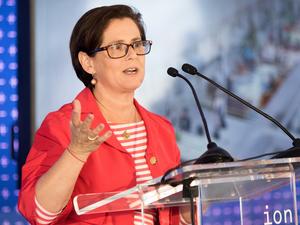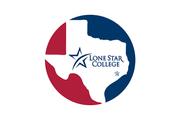
After getting millions of e-learning devices into the hands of school children during the pandemic and helping reimburse Texas school districts for hundreds of millions of dollars to cover the costs, Gaby Rowe and Operation Connectivity are on their next task — expanding broadband access to all Texas students.
Rowe, who previously led Rice University's innovation hub The Ion, startup incubator Station Houston and The Village School, is project lead for Operation Connectivity, a statewide initiative formed last year to deliver internet connectivity and device solutions to Texas school districts struggling to keep up with virtual learning during the Covid-19 pandemic. The effort delivered millions of laptops and Wi-Fi hotspot devices to Texas school districts for the 2020-2021 school year. In November, Gov. Greg Abbott, the Texas Education Agency and the Texas Division of Emergency Management announced a $420 million reimbursement program to help schools recoup costs they incurred to make the bulk device purchases.
But e-learning devices do little good for students that lack access to broadband internet in the first place.
Rowe and the Operation Connectivity team are now focused on expanding broadband access to public school students across Texas. She spoke with the Houston Business Journal about the broadband connectivity effort and the impact that the pandemic and federal stimulus dollars have had on bridging the digital divide.
You started with Operation Connectivity after the pandemic started last year. What have you been able to accomplish so far? It started by getting $200 million from the governor to start a bulk purchase because there were really, really bad supply chain issues for schools. We had schools who were trying to buy computers for their students over the summer, knowing that remote learning was going to continue into a new school year, and they were being told they couldn't get their devices for nine to 12 months. These are districts [where] many of them didn't even have technology plans because it was never an option for them. They didn't have the resources for it before.
We started working directly with the suppliers themselves and every piece of the supply chain — from where were the screens coming from to where were the chips coming from. [We] worked with all those same people who were helping out to build an innovation economy in Houston: the Intels, the Microsofts, the Dells. Really, our argument with them was, "You're investing all this money in the innovation economy in Houston and in Texas, and yet, there's a generation of Texans and Houstonians who are not going to be able to participate in it because they're going to be so far behind." They jumped on board and were really helpful there.
By Dec. 31, we had helped districts across the state. All types of districts, all geographies, all sizes. Charters and traditional districts. We'd helped them acquire almost 4.6 million devices, a little over a million of which were hotspots, and the rest were keyboard e-learning devices.
If you think about the digital divide broken up into an e-learning device, a broadband connection and then sort of what you do with that connection afterwards, we took care of one of those three: We covered the e-learning devices. Now, what we really need to focus on is broadband.
To tackle the broadband challenges, Operation Connectivity is negotiating with more than 100 internet service providers to provide low-cost internet access to children enrolled in public schools. How go those efforts? It's actually 156 [ISPs]. The overwhelming majority of students in the state of Texas are covered by about 20 ISPs, so of course, those ISPs have been the ones that we spend the most time talking to. But it's critically important for us to talk to every ISP that covers every student in the state of Texas. We're not done until every one of those students is given the option.
Not every family, every household, every student is going to choose to bring broadband into their homes, and you can't mandate that. But we can do our very best to structure in a way that is as easy and as seamless as possible for every family to be able to do it, should they choose to.
The $200 million bulk device purchase was financed by the state with funding from the CARES Act of 2020. Stimulus funds will likely be needed to finance the broadband connectivity efforts. Has the pandemic enabled all of this to happen in Texas? Unquestionably. I started talking about the issues of student connectivity as an educator 20 years ago, and I'm not the only one. The words "digital divide" existed before the pandemic — you can go look up dozens of articles on the digital divide that span decades.
The challenge was you needed everybody to come to sit at the table. It had to be a public-private partnership. It had to be a deep collaboration between manufacturers, educators and governments. And there had to be the motivation to put the money toward it.
The pandemic has had a decimating, dreadful economic impact on so many people and a tragic impact on so many people's personal lives. But one of the silver linings that has come out of this is the focus on the ubiquitous need for connectivity — in the same way that electrification was focused on and looked at in sort of the 1930s and 1940s.
Many of those of us who have flourished in our work during the pandemic have done so because of the access to connectivity. Those of us who have not [are] those whose jobs depended on their hands, [and] those students who were not able to connect and who are dependent on other processes. Those students are not going to progress in the ways that we need them to progress to participate in the digital economy. To participate at all, no less than in the digital economy.
The pandemic has allowed us to shine this just tremendous spotlight on the ubiquitous need for connectivity.
This interview has been edited for length and clarity.
Want more tech and innovation news? Houston Inno launches April 15. Click here to learn more, and click here to sign up for Houston Inno's twice-weekly The Beat newsletter.










